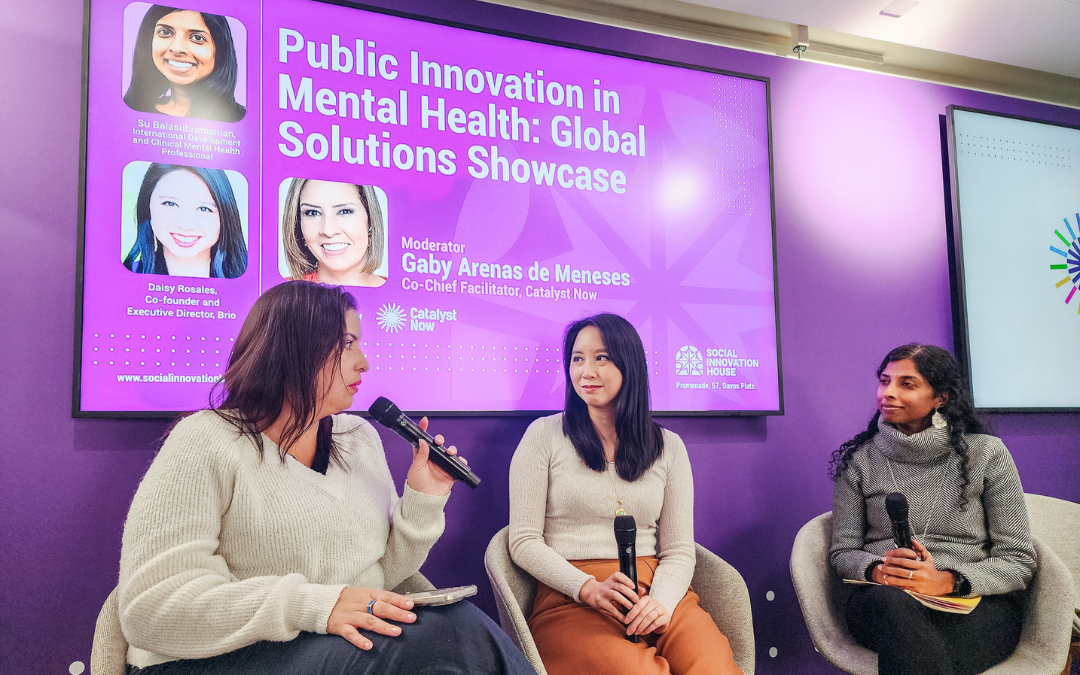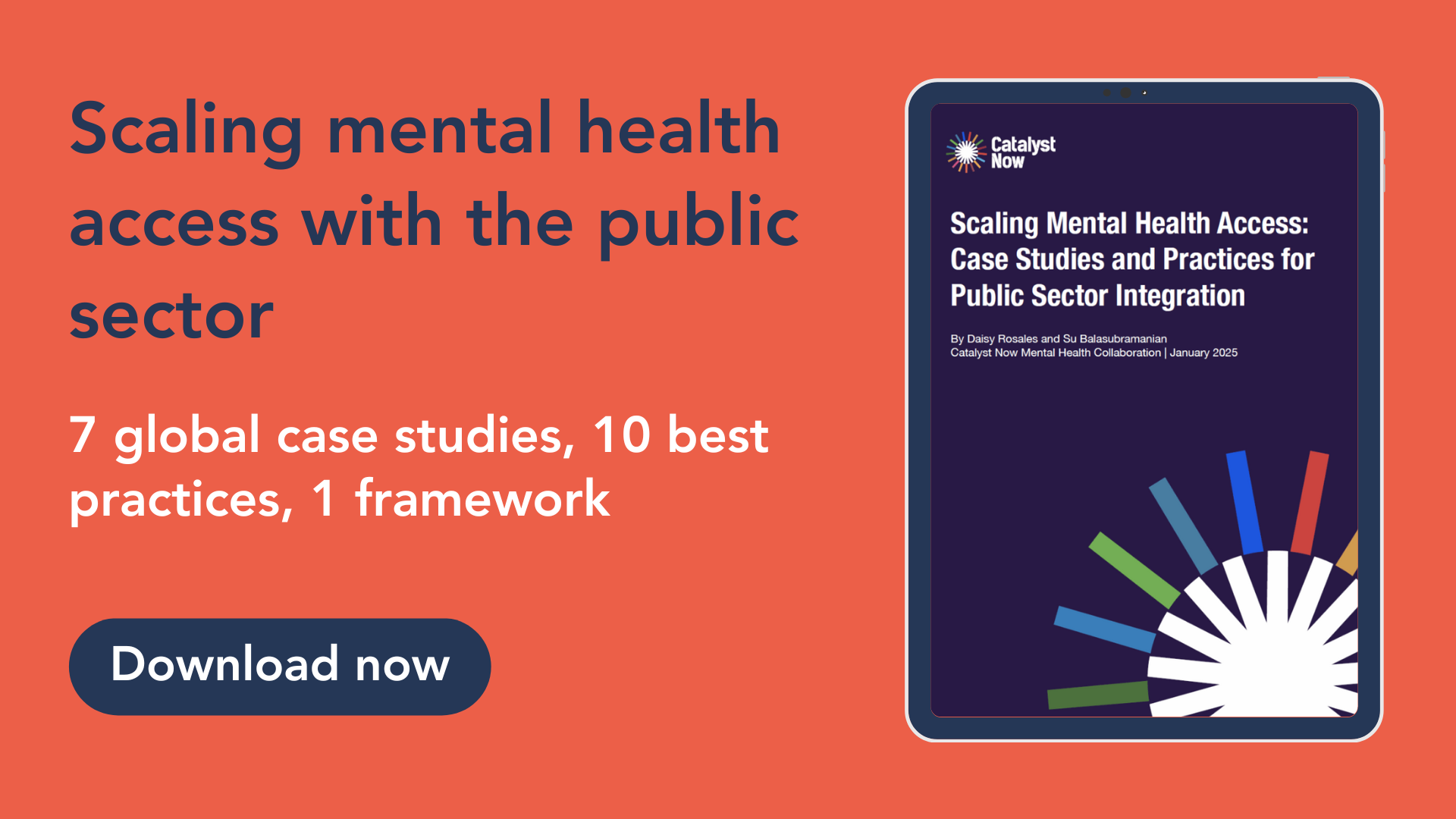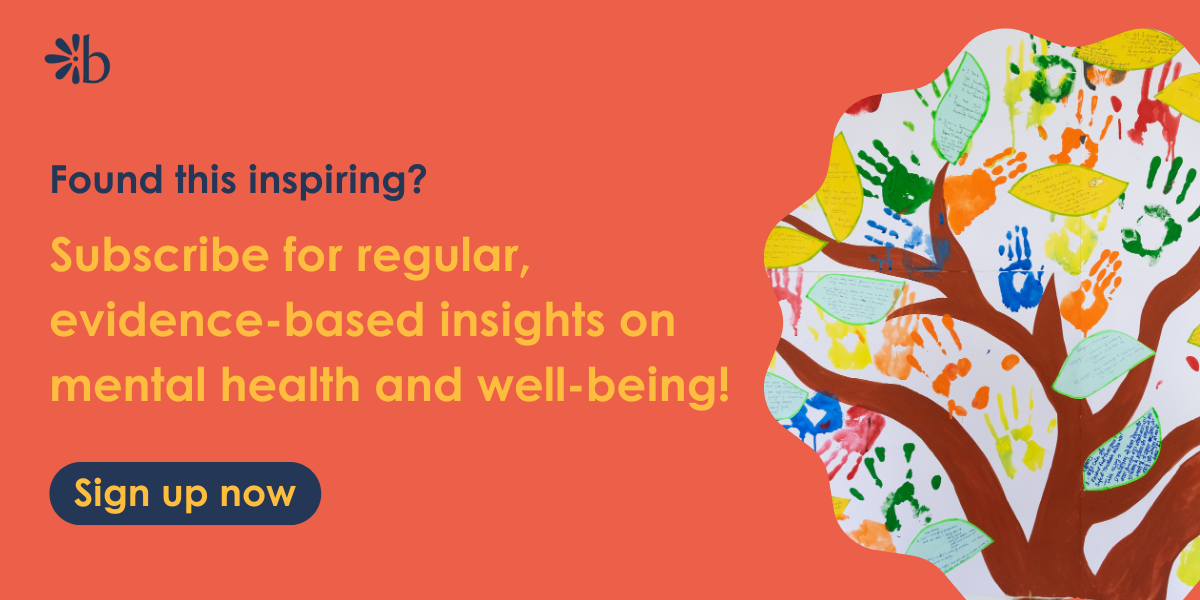When it comes to scaling social innovation— finding ways to make good products, services, and programs available to exponentially more people— partnership across sectors becomes necessary.
Mental health is no exception. With 1 in 2 people globally expected to experience poor mental health in their lifetime, the scale of global need is impossible to meet through the nonprofit sector alone. Furthermore, a diversity of approaches must be taken across the health spectrum: from health promotion and prevention to treatment and maintenance. Mental health is too important to leave siloed to organizations (and institutions) dedicated to it directly; we have to integrate mental health into other sectors so that many more people can benefit.
At Brio, we’ve been partnering to extraordinary civil society organizations to weave mental health into everyday life, especially for children and young people, through the sectors of education, workforce development, youth leadership, and gender equity. Increasingly, our work has been done in collaboration with the public sectors, especially education and healthcare.
So throughout 2024, we wanted to explore real life case studies in which mental health-focused NGOs and social innovators collaborated with the public sector to make mental health programs and services more accessible. As our experience with the State of Rajasthan unfolded last year through a successful pilot and subsequent adoption (learn more here), we hoped to learn from others who have employed public-sector collaboration as a key part of their strategy.
A report launched through Catalyst Now at Davos
Together with my co-author Su Balasubramanian, I (Daisy Rosales) reached out to leaders across the world who have worked with the public sector, or in the public sector, to improve mental health. We found case studies that were diverse in:
- Region: countries represented included Costa Rica, Kenya, Nigeria, India, United Kingdom, and USA.
- Sector and level of government: from municipalities to state and national levels; sectors including health, culture, education, justice, and overall national policy.
- Mental health approaches: from integrating treatment protocols to advancing effective mental health promotion and illness prevention.
We published the report through Catalyst Now, the world’s largest global network of social entrepreneurs and innovators, many of whose members are represented in the report. Catalyst Now enabled the report to be published and translated into Spanish, French, and Arabic, along with Portuguese and Mandarin forthcoming.
7 global case studies, 3 key phases, 10 best practices
Given how diverse these case studies were– and the fact that we were only able to deeply research a handful— we were delighted to find that there were indeed some patterns, dynamics, and practices that we found in common across all of them.
That’s what the rest of the report is about:
- If there’s a process framework that captures what it’s like to innovate with the government and achieve adoption at scale— what does it look like?
- What are some practices that governments and social innovators employ to ensure a productive, ongoing relationship?
The key dynamic we write about in the report is that the simple story of innovation to adoption to exit just doesn’t really hold. The nonprofit or social innovator may stay engaged after the government has taken ownership of the approach or program, in order to ensure there’s continuous learning and adaptation. This is a good thing: governments and civil society can collaborate for the long term in order to ensure continued quality services offered to their populations.
That said, the most intensive phase of this process is integration: where the system is being trained on this new way of working. It’s a big victory to sign an MOU or to pass a new policy; the execution of these intentions is where the rubber meets the road.
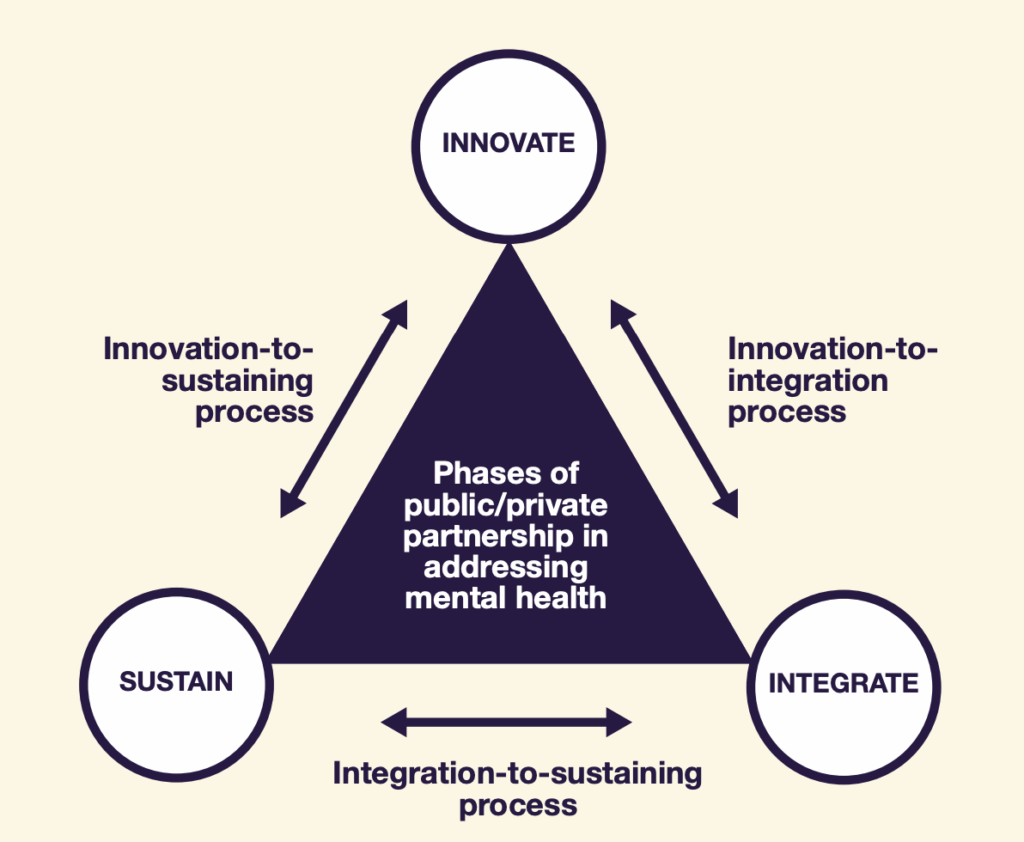
Telling the story at Davos – the World Economic Forum gathering
Su and I were thrilled to be able to join Catalyst Now at Davos in January 2025 to feature the report at the Social Innovation House. Thanks to the pathways paved by other social innovators and entrepreneurs before us, there were many people gathered at Davos that week interested in the future of mental health.
Most attendees at Davos work in government or the private sector— so having a platform as social sector leaders was truly special. In order to meet the world’s biggest needs effectively, all sectors need to come together. Davos and the World Economic Forum are a place where this can happen, and we hope it continues to.
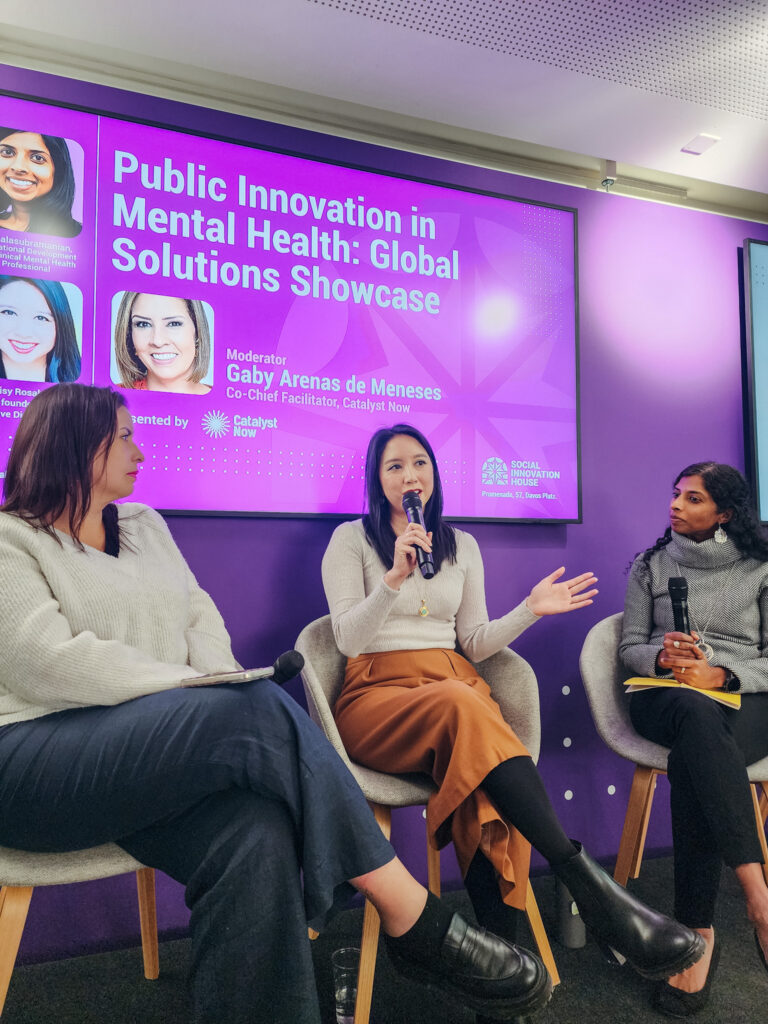
Partnering with government: a continuous learning process
Despite dedicating a lot of my free time last year to chasing down leads, interviewing innovators, and composing this report, I feel we’re only beginning to scratch the surface. I’m grateful for many others who have devoted much of their career to working on best practices for public-private partnerships, and effective governance more generally. In the end, what we want to see are public systems better equipped to serve their people— especially the most marginalized.
As for Brio, we’ve learned so much from our partners in this process of building a productive and trust-based relationship with government stakeholders. And we’re learning what that looks like as we move toward scaling one of the programs we co-created across the state of Rajasthan. There isn’t a roadmap (I wish there were), and in general we in the nonprofit/philanthropic sector need a significant reorientation in order to work more effectively with government systems. However, I’m hopeful that, together with other innovators dedicated to lasting impact in mental health, we’ll get there.
Because this is too important an opportunity pass up. If we can successfully integrate mental health into the public sector, then a few really great things can happen in our lifetime: Nonprofits get to focus on continued innovation, what they do best. The government serves its people better. And millions of individuals experience the flourishing and vitality that mental health can bring.
Isn’t that worth a shot?

